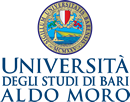UN APPROCCIO ORIENTATO AL GENERE NELLA DIDATTICA A DISTANZA DELLA PRODUZIONE SCRITTA IN LINGUA STRANIERA
DOI:
https://doi.org/10.15162/1970-1861/1480Parole chiave:
Writing Skills, E-learning, Genre-Oriented Approach to Learning, Language Teaching TechnologiesAbstract
The recent pandemic experience has shown the advantages, but also the drawbacks of online language teaching. Given the growing importance of this educational mode, the paper addresses the issue of distance language education by advocating a genre-based approach for the online teaching of written production in the foreign language. It is argued in the paper that, based on its success in different areas of language education, the teaching/learning cycle adopted within a genre-oriented pedagogy has a strong potential with respect to distance learning. This might be especially true when the cycle’s stages are allocated between the virtual classroom and autonomous work depending on their nature (e.g., the modelling phase requires a scaffolding action on the part of the teacher and is therefore best accomplished in the virtual classroom). Such genre-based approach to second language writing is being currently used in an online course of Italian language and the paper reports on the first outcomes of an ongoing action-research aimed at assessing and improving. Implications for teaching are discussed.
Riferimenti bibliografici
Badger R., White G., 2000, “A process genre approach to teaching writing”, in ELT journal, 54[2], pp. 153-160.
Coonan C.M., 2012, La lingua straniera veicolare, Torino, UTET libreria.
Cotta Ramusino P., Mollica F., 2019, “Fraseologia in prospettiva multilingue: il continuum lessico-sintassi”, in Casadei F. e Basile G. (a cura di), Lessico ed educazione linguistica, Roma, Carocci, pp. 145-182.
Feez S., 1998, Text-based syllabus design, National Centre for English Language Teaching and Research, Macquarie University.
Fragai E., Fratter I., Jafrancesco E., 2020, “Insegnamento linguistico ed emergenza sanitaria: riflessioni sulla DAD”, in Italiano LinguaDue, 12[2], pp. 38-62.
Godwin-Jones R., 2018, “Second language writing online: An update”, in Language Learning & Technology, 22[1], pp. 1-15.
Hampel R., 2003, “Theoretical perspectives and new practices in audio-graphic conferencing for language learning”, in ReCALL, 15[1], pp. 21-36.
Harrell W., 1999, “Language learning at a distance via computer”, in International Journal of Instructional Media, 26[3], pp. 267-281.
Hyland K., 2002, “Genre: Language, context, and literacy”, in Annual review of applied linguistics, 22(1), 113-135.
Hyland K., 2004, Genre and second language writing, Ann Arbor, University of Michigan Press.
Hyland K., 2019, Second language writing, Cambridge, Cambridge University Press.
Izzo D., Ciurnelli B., 2020, “L’impatto della pandemia sulla didattica: percezioni, azioni e reazioni dal mondo della scuola”, in Lifelong Lifewide Learning, 16[36], pp. 26-43.
Lamy M.N., 2013, “Distance CALL online”, in Thomas M., Reinders H., e Warschauer M. (a cura di), Contemporary computer-assisted language learning, London, Bloomsbury, pp. 141-158.
Llinares A., Morton T., Whittaker R., 2012, The roles of language in CLIL, Cambridge, Cambridge University Press.
Martin J. R., 1992, English text: System and structure, Amsterdam, John Benjamins.
Molina A., Michilli M., Gaudiello I., 2021, “La spinta della pandemia da Covid-19 alla scuola italiana”, in Mondo digitale, 20[1], pp. 47-80.
Nordin S.M., 2017, “The best of two approaches: Process/genre-based approach to teaching writing”, in The English Teacher, 11, pp.75-85.
Paltridge B., 2013, “Genre and English for Specific Purposes”, in Paltridge B., Starfield S. (a cura di), The handbook of English for specific purposes, Hoboken, John Wiley & Sons, pp. 347-366.
Paltridge B., 2014, “Genre and second-language academic writing”, in Language Teaching, 47[3], pp. 303-318.
Pepe D., Garelli G., 2015, Al lavoro! Corso di italiano per stranieri in contesto lavorativo, Torino, Loescher.
Pichette F., 2009, “Second language anxiety and distance language learning”, in Foreign Language Annals, 42[1], pp. 77-93.
Piscitelli M., 2007, “La ricerca-azione nella didattica”, in Cambi F. (a cura di), Ricerca-azione e scuola. Materiali di riflessione, Firenze, Irre Toscana, pp. 51-57.
Quaglino G.P., 2005, Fare formazione. I fondamenti della formazione e i nuovi traguardi, Milano, Raffaello Cortina.
Richardson J.C., Koehler A.A., Besser E.D., Caskurlu S., Lim J., Mueller C.M., 2015, “Conceptualizing and investigating instructor presence in online learning environments”, in The International Review of Research in Open and Distributed Learning, 16 (3), pp. 256-297.
Saeed M.A., & Ghazali K., 2017, “Asynchronous group review of EFL writing: Interactions and text revisions”, in Language Learning & Technology, 21[2], pp. 200-226.
Trentin G., 1998, Insegnare e Apprendere in Rete, Bologna, Zanichelli.
Trentin G., 1999, “Qualità nella formazione a distanza. Una analisi del rapporto tra qualità, interattività e costi nella formazione a distanza”, in TD, Rivista di Tecnologie Didattiche, 16 (1), 10-23.
Trentin G., 2006, “Apprendimento collaborativo in rete e didattica universitaria: i ritorni di tipo educativo”, in TD, Rivista di Tecnologie Didattiche, 38, 5-11.
White C. J., 2017, “Distance language teaching with technology”, in Chapelle C. A., Sauro S. (a cura di), The handbook of technology and second language teaching and learning, Hoboken, John Wiley & Sons, pp. 135-148.
Zannoni F., 2020, “La didattica universitaria a distanza durante e dopo la pandemia: impatto e prospettive di una misura emergenziale”, in Media Education, 11[2], pp. 75-84.





